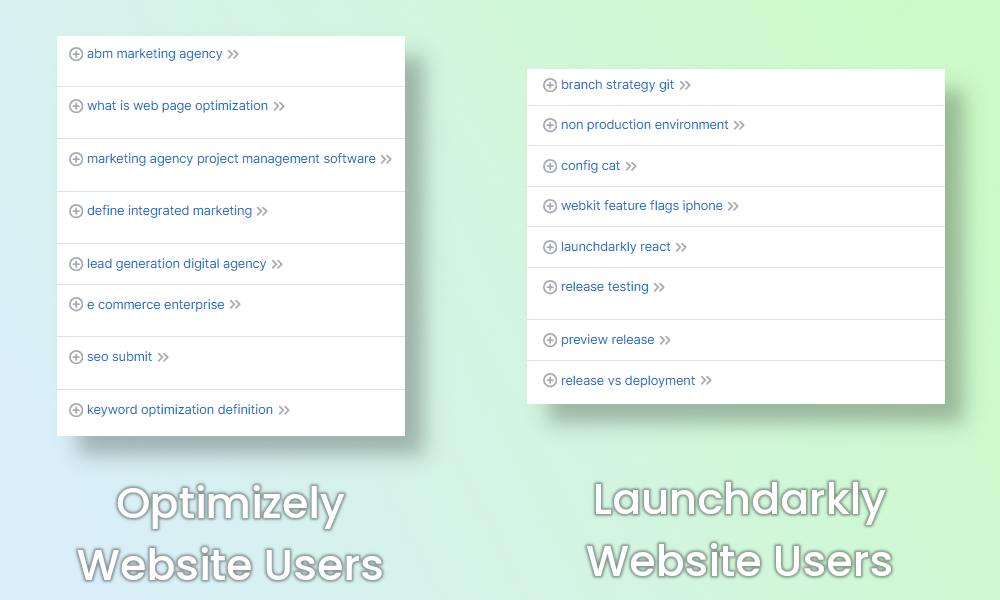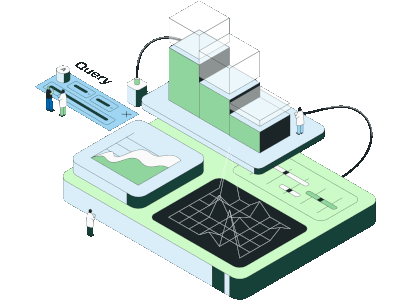
Optimizely was one of the first A/B testing platforms ever to hit the market, but has it retained its lead?
It’s easier to understand Optimizely’s features in 2024 when you understand its story.
Back in 2008, The Obama campaign’s Director of Analytics, Dan Siroker, ran what was arguably the first data-driven election campaign in history. The website methodology—which was groundbreaking at the time—went something like this:
Create two web page variants
Randomly split users between both web pages
Determine which variant got the most clicks, and funnel the remaining users to it
Some other tactics included tons of CTAs, A/B testing subject lines, and optimizing forms. Ultimately, the art of marketing experimentation was born—or at least made public knowledge.
Jump ahead
The top 4 Optimizely alternatives are:
After the campaign ended, Dan Siroker went on to found Optimizely in 2010 with a bunch of feathers in his cap: His web optimization strategies contributed to a successful election campaign, and he had almost singlehandedly taken credit for the invention of dotcom A/B testing.
At first, Optimizely focused on what Dan Siroker was good at—customizing and optimizing websites. Some of its flagship features involved website and mobile personalization, giving users different experiences based on custom requirements and metrics.
In 2016, Optimizely released Optimizely X, which provided even more tools for website experimentation, personalization, mobile development, and full-stack support. This signals Optimizely’s official entrance into the fray of experimentation platforms and product analytics tools.
It’s worth noting that Optimizely spent—and still spends—considerable development resources on its core website optimization features, which exclusively appeal to a marketing audience. And while Optimizely is indeed a great tool for marketers, there are plenty of potentially more compelling products for engineers, DevOps, and data science teams, who require a different set of features altogether.
Wait, is Optimizely for web experiments or product experiments?
Short answer: Yes.
These days, Optimizely positions itself as a website and software product A/B testing and experimentation platform—not just for marketers anymore.
Optimizely boasts three main products to choose from:
Orchestrate: Its CMS and content optimization tool (sold in pieces)
Experiment: Its experimentation platform (sold in pieces)
Monetize: Its e-commerce platform (sold in pieces)
More confusingly, it also offers two “enhancements”—Data Platform and Email Campaign—as add-ons to existing Optimizely plans.
It seems like a solid choice for Saas product experimentation, but its web traffic tell a different story.
Despite Optimizely’s self-positioning, its website is predominantly visited by marketers. The search traffic shows how different Optimizely’s active audience is from its main competitor’s (Launchdarkly’s) audience.

Launchdarkly is a tried-and-true A/B testing platform—geared towards developers—and its website visitors are looking for answers about release testing, software deployments, production environments, and so on. Optimizely’s users are looking for answers about integrated marketing, lead generation, SEO, keyword optimization, web page optimization, and other marketing experimentation content.
So, the long answer is that Optimizely can do both web experimentation and product experimentation, and a bunch of other things, too—hence all piecemeal pricing structure—but most people still see it as a website optimization tool. Including its users.
For the rest of this article, I’m going to be comparing all Optimizely features against several competitors to paint a clearer picture of which tools are best for which purposes.
What is Optimizely?
Self-described as a ✨digital experience platform✨, Optimizely is an A/B testing and experimentation suite that is mainly focused on website optimization, but can also be deployed in mobile applications, full stack, software products, and virtually anywhere that can execute code.
Priced a la carte, Optimizely also offers a techy content management system, an online marketing hub (think HubSpot competitor), and e-commerce website optimization tools, with additional add-ons like a data platform and an email marketing suite.
Optimizely is primarily used by marketers to experiment with web content, landing pages, email campaigns, and the like, but it also positions itself as an experimentation platform that can help SaaS companies gain insights and make better decisions about their products.
Pricing model: Optimizely’s pricing model is very hard to nail down without getting a custom quote, but it ain't cheap. Even the most basic version reportedly starts close to six figures annually.
Starter tier: Optimizely doesn’t have a starter tier. If you’re still in growth mode, you’re on your own.
Notable features:
A/B testing
Content management (and built-in CMS)
SDK support for 10 different languages
AI predictive audiences for website optimization
Robust community and documentation
Watch out for: Besides the price, users report that Optimizely is cumbersome to set up and deploy on a website, with one user stating that their “developers have pushed back on placing the code snippet on any non-purchase transaction pages since it may cause load issues.”
Another web experimentation user alleges that it loads slowly and damages websites’ performance for end users.
According to G2, the majority of Optimizely’s negative reviews center around:
Technical issues
Cost
Customer service
Ramp-up time
Difficulty of use
And, as you may have guessed, they also heavily reference its website optimization features, as opposed to its product experimentation.
The top Optimizely alternatives

1. Statsig
Pricing model: Statsig offers unlimited seats, free feature flags, and easy-to-predict prices that are based on usage.
Starter tier: Statsig offers up to 500 million free events, and a generous program for startups
Pro tier: Starting at $150/month
Enterprise and Warehouse-Native: Contact sales
Notable features:
Advanced Stats Engine (CUPED and Sequential Testing with Bayesian or Frequentist approaches)
No seat-based pricing
Plug and play: Out-of-the-box metric attributes
Holdouts, Experiment Layers, Dynamic Configs, and more
Unlimited MAU
🤔 Read more: Cloud-hosted versus warehouse-native experimentation.
Summary: Founded by ex-Meta engineer Vijaye Raji, Statsig is an all-in-one tool for product experimentation, feature flagging, and analysis. The flexible platform offers both cloud-based and warehouse-native solutions to fit its users’ dynamic needs.
The tool has received hundreds of positive reviews and has become a popular choice among developers and product teams. Initially targeted towards smaller companies, it has now expanded to include major tech players such as Notion, Figma, Microsoft, and Lime, who are among its users.
Watch out for: One user notes that some of Statsig’s powerful features aren’t immediately apparent, stating: “[Y]ou need to invest time to learn the system to unlock the most value from the platform.” The user commends the support team and documentation for being helpful but expresses a wish for “future iterations of the platform to include turn-key templates for more complicated setups such as multi-site/tenant.”
Also, Statsig was not built for a marketing audience. While it can easily do web experimentation (especially with CMSs), its features are more geared towards data scientists, engineers, and product managers looking to get the most out of their Saas product.
🔍 Compare now: Statsig versus Optimizely, head to head.
Statsig versus Optimizely, head to head


2. VWO
Pricing model: Much like its competition, VWO’s pricing plan is complicated.
To summarize, VWO splits its offering into seven (7) different products, with each product featuring up to four pricing models—Starter, Growth, Pro, and Enterprise—bucketed by number of users.
The products are:
Web testing
Mobile app testing
Server-side testing
Web behavioral analytics
Web user-based personalization
Web rollouts
The pricing buckets are:
<50k monthly users: Starter
<500k monthly users: Growth
<2M monthly users: Pro
>2M monthly users: Enterprise
Starter tier: VWO advertises a free tier that caps at 50k MAU.
Notable features:
Web customization and analytics
A/B tests and experiments
Website funnels, heatmaps, session recordings
Multi-armed bandit optimization
Summary: VWO is a website A/B testing and experimentation platform that—like Optimizely—focuses on website optimization and experimentation. Being mostly geared towards marketing use cases, it doesn’t support feature gates/toggles/flags, except for a limited server-only capability included in its full-stack package.
For marketers, VWO is a strong tool for gathering user insights, prioritizing hypotheses, planning roadmaps, conducting tests, and analyzing results. VWO boasts its ease of setup, stating that users can launch their first test within minutes without help from IT.
Watch out for: Several users state that VWO’s support is not particularly helpful, with one expressly calling out that it’s difficult to cancel a VWO contract once you’re locked in.
Another user found issues deploying the VWO SDKs, stating that it broke the project, causing their team to be unable to implement VWO whatsoever.
And be careful of the complicated pricing structures such as VWO's. Sometimes users sign up for service only to find out that a specific feature they expected is actually another costly add-on.

3. Adobe Target (plus Adobe Analytics)
Pricing model: Adobe Target doesn’t publish its pricing online, and potential buyers will need to talk to sales to get a custom quote.
Pricing considerations on their website include the user/event volume of the properties on which Adobe Target will be implemented, the options and features (add-ons) that a user will require, and the channels that will implement Adobe Target, like email, IOT, web, and more.
While Adobe Target’s pricing is fully custom, Adobe Analytics offers three tiers; Select, Prime, and Ultimate—but prices are still nowhere to be found without consulting a sales expert.
Starter tier: Neither Adobe Target nor Adobe Analytics offer a starter tier.
Notable features:
Feature flags and A/B testing
Analytics
Multivariate testing
Multi-armed bandit optimization
Summary: Adobe Experience Cloud offers two products that comprise an A/B testing and analytics suite to rival Optimizely: Adobe Target and Adobe Analytics.
Target is its legacy assignment tool for A/B testing, and Analytics is its web analytics and business intelligence tool. These tools specialize in website personalization and marketing campaigns but with a more limited scope than a comprehensive, purpose-built experimentation platform.
Watch out for: Adobe Target is a good choice for Adobe Experience Cloud customers who want to keep their experimentation and A/B testing in the same stack, but it also comes with some shortcomings. Where Statsig (and other experimentation platforms) provide SDKs for full coverage including APIs, algorithms, latency, infrastructure, and app experience, Adobe Target only provides the basics.
📖 Related reading: Compare Statsig to Adobe Target + Analytics, head to head.

4. Launchdarkly
Pricing model: Launchdarkly’s Pro tier costs $16.67/seat/month, but its enterprise pricing requires a chat with sales.
Starter tier: Launchdarkly offers a starter tier with limited features for $8.33/seat/month.
Notable features:
A/B testing
Scheduled rollouts
Feature flags
SDKs for every major language
Summary: Launchdarkly is a purpose-built feature flagging, feature rollout, A/B testing, and product experimentation platform. Instead of focusing on marketing use cases, Launchdarkly is developer-focused, with a suite of features that makes application development, mobile app deployment, and Saas experimentation streamlined and straightforward.
Watch out for: Once Launchdarkly is implemented, users state that it’s tough to switch platforms and replace it with a different experimentation and analytics platform.
Additionally, Launchdarkly can get pricy compared to its similarly-featured competitors, as one user notes.
Introducing Product Analytics




